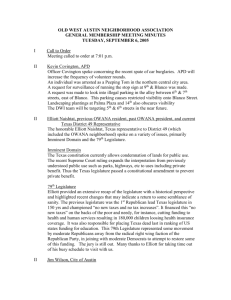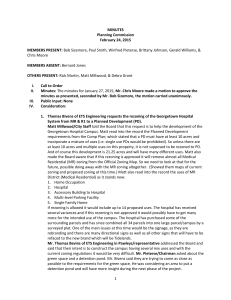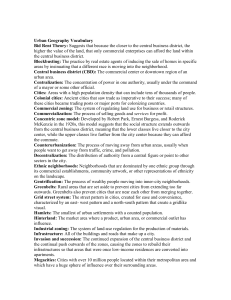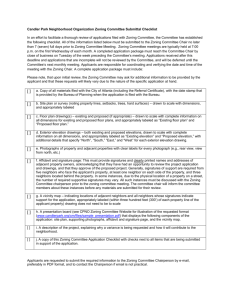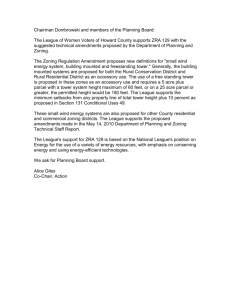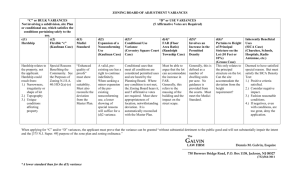Vertical Mixed Use Buildings and Projects in the City of Austin Due
advertisement
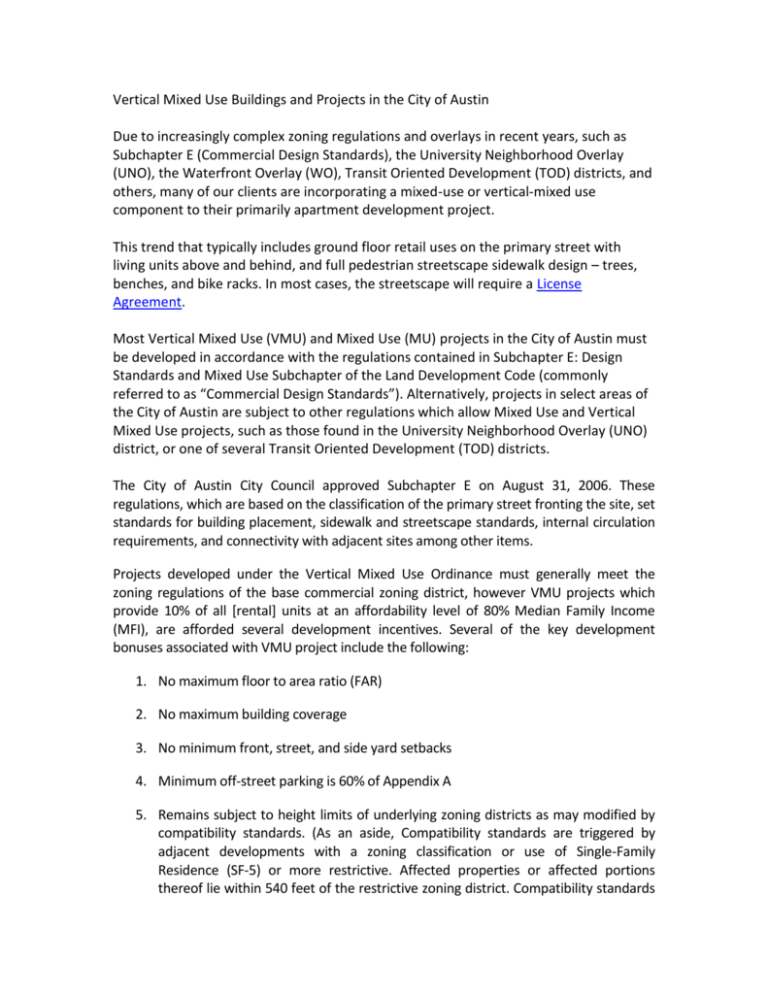
Vertical Mixed Use Buildings and Projects in the City of Austin Due to increasingly complex zoning regulations and overlays in recent years, such as Subchapter E (Commercial Design Standards), the University Neighborhood Overlay (UNO), the Waterfront Overlay (WO), Transit Oriented Development (TOD) districts, and others, many of our clients are incorporating a mixed-use or vertical-mixed use component to their primarily apartment development project. This trend that typically includes ground floor retail uses on the primary street with living units above and behind, and full pedestrian streetscape sidewalk design – trees, benches, and bike racks. In most cases, the streetscape will require a License Agreement. Most Vertical Mixed Use (VMU) and Mixed Use (MU) projects in the City of Austin must be developed in accordance with the regulations contained in Subchapter E: Design Standards and Mixed Use Subchapter of the Land Development Code (commonly referred to as “Commercial Design Standards”). Alternatively, projects in select areas of the City of Austin are subject to other regulations which allow Mixed Use and Vertical Mixed Use projects, such as those found in the University Neighborhood Overlay (UNO) district, or one of several Transit Oriented Development (TOD) districts. The City of Austin City Council approved Subchapter E on August 31, 2006. These regulations, which are based on the classification of the primary street fronting the site, set standards for building placement, sidewalk and streetscape standards, internal circulation requirements, and connectivity with adjacent sites among other items. Projects developed under the Vertical Mixed Use Ordinance must generally meet the zoning regulations of the base commercial zoning district, however VMU projects which provide 10% of all [rental] units at an affordability level of 80% Median Family Income (MFI), are afforded several development incentives. Several of the key development bonuses associated with VMU project include the following: 1. No maximum floor to area ratio (FAR) 2. No maximum building coverage 3. No minimum front, street, and side yard setbacks 4. Minimum off-street parking is 60% of Appendix A 5. Remains subject to height limits of underlying zoning districts as may modified by compatibility standards. (As an aside, Compatibility standards are triggered by adjacent developments with a zoning classification or use of Single-Family Residence (SF-5) or more restrictive. Affected properties or affected portions thereof lie within 540 feet of the restrictive zoning district. Compatibility standards govern setbacks of proposed developments from adjacent property lines as well as building heights. In addition, compatibility standards require specific requirements for lighting, noise levels and screening of equipment, trash dumpsters, and mechanical structures.) 6. Allows redeveloped project to maintain existing level of impervious cover even if in excess of what is allowed by base zoning district when located in the Desired Development Zone BIG RED DOG is currently the civil engineer for several multi-family apartment and mixeduse projects in the City of Austin, with projects both under construction and those currently in the entitlement and design stage. We encourage you to contact BIG RED DOG Engineering | Consulting about your next Vertical Mixed Use project to see how we can help you to make the project a great success.


